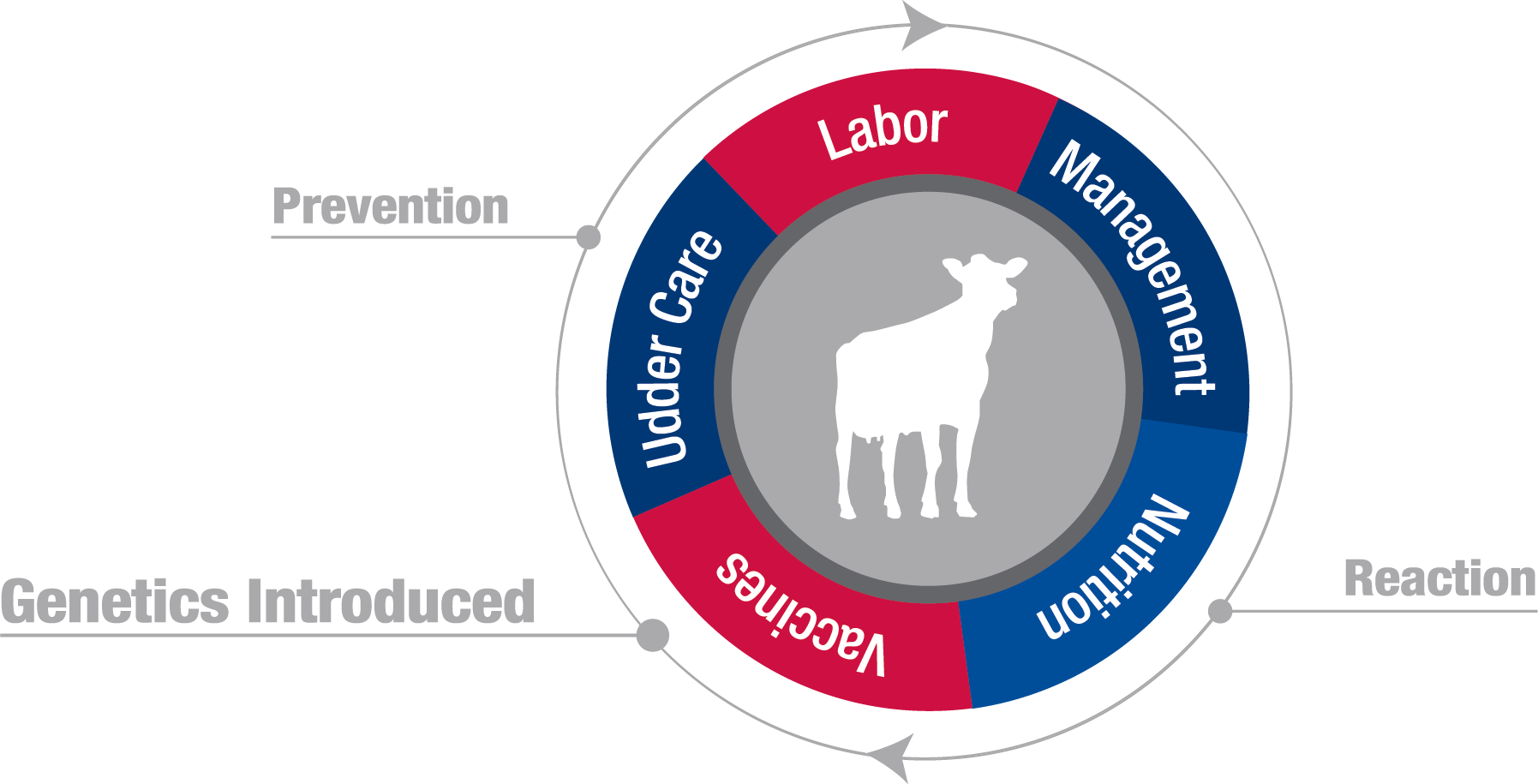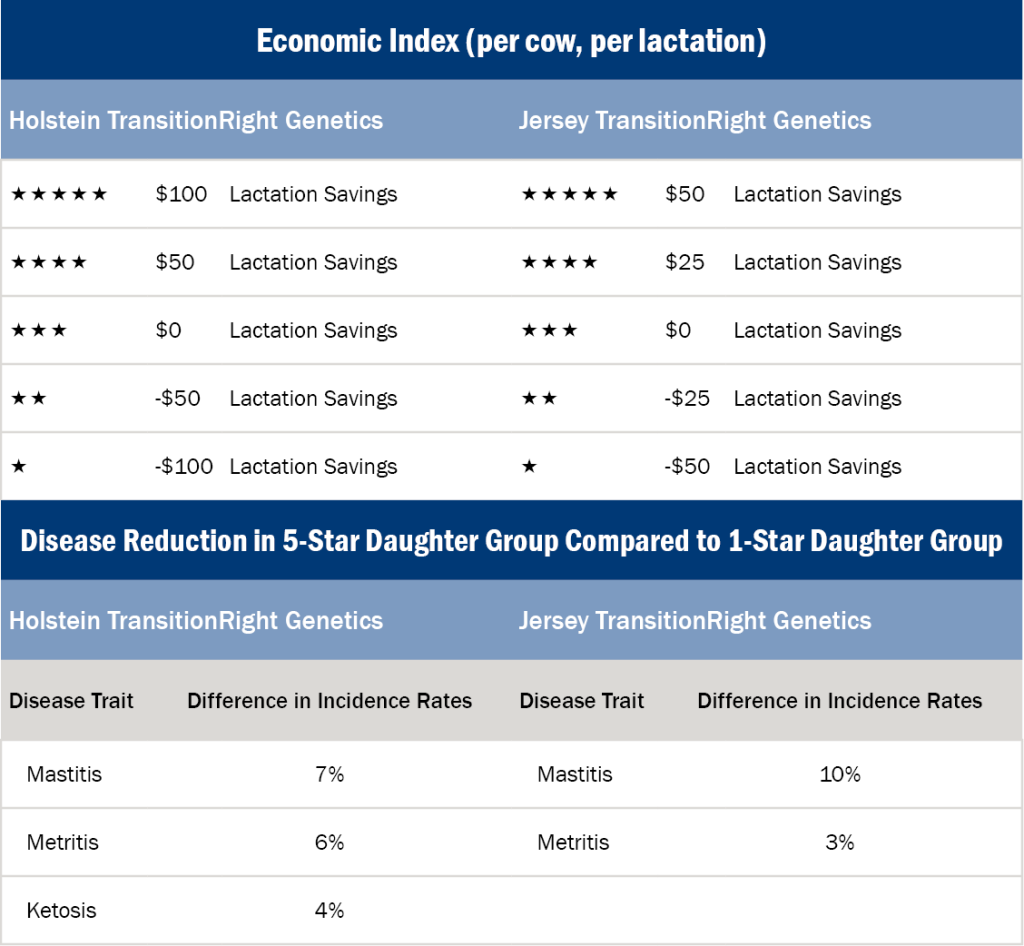Don’t React. Prevent Through Genetics.
Transition health disorders take a toll on your time, money, and your herd’s productivity. Today, however, it’s possible to reduce the risks with Genus ABS enhanced TransitionRight®.
ABS Global, the world leader in bovine genetics, reproduction services, and technologies, uses a refined genetics program that gauges both proven data and Real World Data® (RWD®) genomic evaluations to reduce the likelihood and severity of post-calving metabolic disorders during a cow’s transition period. It’s why the innovative and proprietary TransitionRight provides such reliable predictive data.
TransitionRight allows you to strategically choose ABS sires to enhance the transition health of your herd by making cows more genetically-resistant to disorders including mastitis, metritis, and ketosis.
Currently, 75 percent of disease in dairy cows occurs in the first 30 days in milk and as many as 50 percent of high-producing cows end up being affected by transition cow disorders.1 In a year, it is not uncommon to lose up to 10% of a herd due to transition cow problems.2 TransitionRight is unique because it provides the most comprehensive and reliable data in the dairy market for both Holstein and Jersey herds.

TransitionRight Economics
The economic impact of sire genetics on cow transition health is significant for any size dairy operation. By choosing a 5-star sire, your operation is projected to save approximately $100 for Holsteins and $50 for Jerseys in preventive or reactive costs per cow per lactation over a breed-average 3-star sire.

“TransitionRight has been scientifically validated by our team of geneticists using a robust database of cow records and Real World Data genomics from commercial herds around the world. The proof is in our data. Our customers can improve efficiencies and their bottom lines by simply using TransitionRight Genetics.”
Katie Olson, Ph.D, Global Director for Dairy Product Development
1 Major Advances in Disease Prevention in Dairy Cattle. 2006. LeBlanc, S.J. et al. Journal of Dairy Science , Volume 89 , Issue 4 , 1267 – 1279 and Monitoring metabolic health of dairy cattle in the transition period. 2010. LeBlanc. J Reprod Dev. 2010 Jan;56 Suppl:S29-35.
2 Reproductive performance of North American dairies by geographic region. 2015. C. F. Vergara*, F. Bitencourt, L. Johnson, D. Vallejo, and H. Lopez. J. Anim. Sci. Vol. 93, Suppl. s3/J. Dairy Sci. Vol. 98, Suppl.


